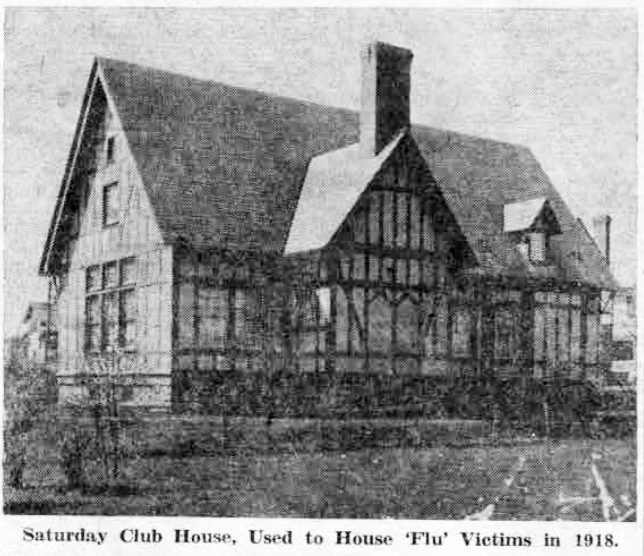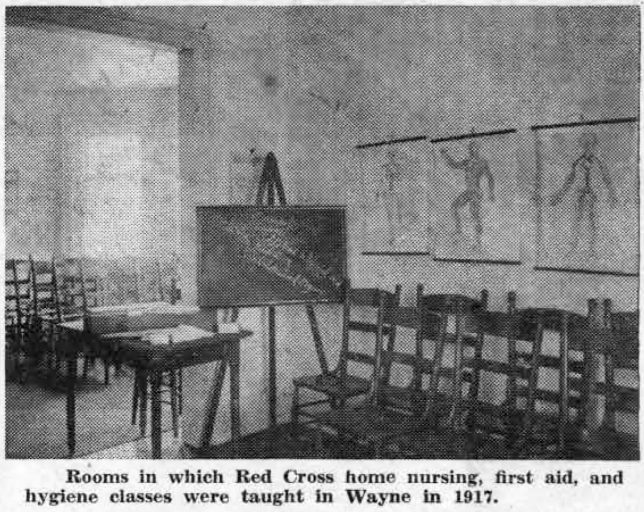This week’s column concludes the story of the great Armistice Day parade, held in Wayne on November 16, 1918, just five days after the cessation of hostilities between Germany and the Allies in World War I. Described then as “the finest parade ever seen in this town,” it can still claim that distinction in the minds of many of those whose memories span the intervening 38 years.
The group or Wayne citizens, young and old, who, with a detachment of Marines from League Island, headed the long parade, were followed by a local Italian band of 24 pieces. Members of this band all wore colorful uniforms with military dress chapeaux. Behind the musicians were the local Italian citizen celebrants of Wayne, some 75 in number. In their midst was a Roman chariot, driven by one of the town’s best known citizens, Hyacinth D’Ignazio, who by the end of the parade had shouted himself hoarse with his cries of victory for the allies.
Among those who followed after this contingent in the line of march were members of the various societies of St. Katharine’s Church. Then employees of the Wayne Iron Works, prominent among them “Big Man” Houck, and a small band, featuring the music of snare drums, with about 50 members of the Wayne Men’s Club, followed. The Wayne Plumbing and Heating Company’s seven handsomely decorated automobiles, with their placards proclaiming that “Liberty Will Never Die,” drew rounds of applause from onlookers.
Other representatives in this section were from the Wayne Post Office force, the Luckenbill Company, Counties Gas and Electric, L.K. Burket & Bro., C.A. Lobb and H.J. Collins, who made “a big hit with his forge in full blast, turning out iron for ship building.”
A choice selection of produce from his war garden, inducting a pumpkin that weighed 71 pounds, was exhibited by A.L. Weadley, along with the placard, “Food Won the War.” The Radnor Township school bus and the Township Police patrol wagon were followed by a contingent of local firemen whose numbers were augmented by others from Bryn Mawr, Upper Darby and Newtown Square. At the end of the parade came one of its most applauded features, in the way of a float from the R.H. Johnson Company, on which rode a “bevy of charming girls.”
Once the parade had passed its entire line of march, participants and onlookers alike assembled on the high school grounds. There, to the accompaniment of the massed bands, Edgar L. Hunt led the crowd in the singing of “America,” “Battle Hymn of the Republic,” “Long, Long Trail,” “Marseillaise,” “Over There” and “The Star Spangled Banner.”
Among the interesting sidelights of the story of the Wayne Armistice Day parade is the one of the plane that suddenly circled overhead as the marchers went along North Wayne avenue. At its controls was Lieutenant J. Brooks B. Parker, of Strafford, who had come from Washington, D.C., to take part in the local celebration. Unfortunately the message of felicitation which he dropped from his plane caught in electric wires overhead!
Still another story has to do with the bounteous supper served the visiting Marines from League Island by the members of the Wayne Red Cross Branch. Not to be outdone by the latter, members of the Wayne Saturday Club threw open the doors of their clubhouse that evening, so that the Marines could enjoy a dance with the local girls.
But the story that tops all others because it is so typical of the occasion is the one of the sounding of the fire siren just at the very moment that the local firemen and their guests sat down to supper in the firehouse. Whereupon “in less time than it takes to tell it, the Wayne firemen were on Highland avenue, where crossed wires had started a blaze in one of the houses… the firemen put out the blaze in a jiffy and returned to their mutton.”


